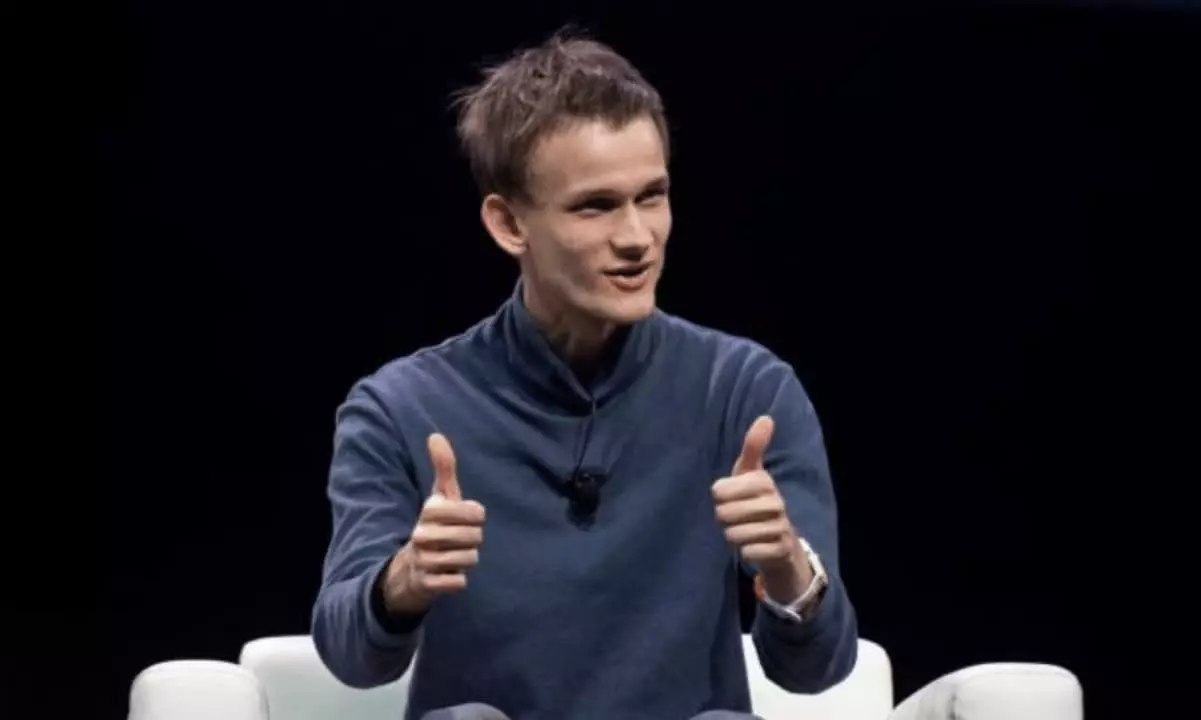The crypto community recently witnessed a significant move by Ethereum co-founder Vitalik Buterin, who sold 651.6 ETH, valued at approximately $1.62 million, primarily from meme coin transactions. This decision aligns with his ongoing commitment to philanthropy. Buterin’s sales were not merely a liquidation of assets but also a statement about the evolving role of meme coins in charitable activities. Notably, transactions included the sale of 10 billion MOODENG tokens and significant amounts of MSTR and EBULL, underscoring his strategic exit from these forms of digital currency amidst a burgeoning market for meme coins.
In a landscape cluttered with cryptocurrencies, Buterin has lauded the potential of meme coins to support charitable endeavors, indicating a blend of humor and social responsibility. His sales over the past week have generated a remarkable 1,101 ETH, with 360.16 ETH—equivalent to around $884,000—donated to various charities. This philanthropic streak is reflected in his acknowledgment of meme coin projects that proactively allocate portions of their supply to altruistic ventures. The example of MOODENG stands out, as Buterin plans to use its proceeds to advance technology aimed at combating airborne diseases. Despite the cartoonish nature of meme coins, Buterin’s efforts reframe them as potential vehicles for social good.
Nevertheless, this charitable narrative is not without its critics. Some community members have raised alarms about the legitimacy of certain meme coins, particularly EBULL, which sparked skepticism from figures like ‘Crypto Rug Muncher.’ These critiques highlighted how increased visibility from Buterin’s endorsements could inadvertently promote tokens that may lack foundational stability and accountability. The crux of these allegations suggests that behind the facade of charity could be a drive to inflate prices through speculative trading, ultimately undermining the core tenets of trust and community within the cryptocurrency space.
The decline in confidence is exacerbated by opinions from industry leaders such as Chris Dixon from Andreessen Horowitz. He articulates that while meme coins are easily birthed into the market, genuine projects are sidelined by the allure of quick profits. The broader implications point to significant regulatory challenges that could hamper the evolution and acceptance of these digital assets. CoinShares has further cautioned the market against potential liquidity issues and market manipulation related to meme coins, highlighting the need for due diligence among investors.
In closing, Buterin’s recent activities in the meme coin sphere underscore an intriguing intersection of humor and humanitarianism. However, they also unveil a darker underbelly characterized by skepticism and calls for caution. As the meme coin market continues to gain traction, a balancing act will be necessary—harmonizing philanthropic ambitions with an unwavering commitment to transparency and community welfare. The dialogue surrounding the role of leading figures like Buterin in shaping this narrative will undoubtedly play a pivotal role in determining the future trajectory of meme coins and their acceptance within the broader cryptocurrency ecosystem.















Leave a Reply